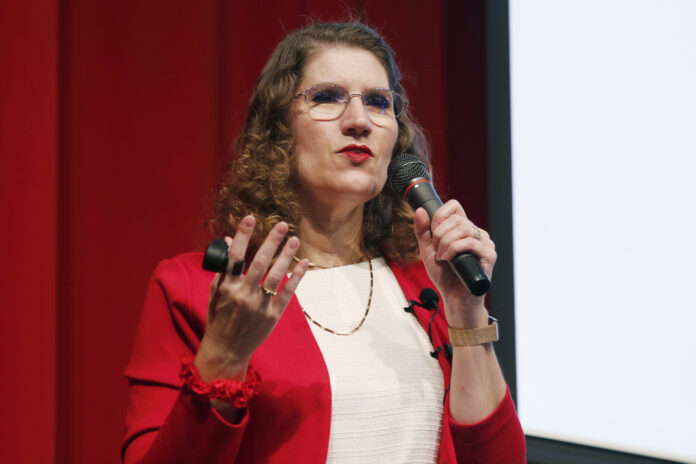
The variety of ways to self harm and tips on how to handle it was part of a presentation by international speaker and mental health expert Lori Vann Monday.
The day-long event, focused on supporting student mental health, was held in the Performing Arts Center on the Odessa High School campus. It was aimed at teachers, counselors, parents and peace officers.
Vann has a private practice and licensed professional counselor who is considered an expert in non-suicidal self-injury.
The COVID-19 pandemic increased loneliness, depression and suicidal ideation, Vann said. According to her presentation, suicidal behaviors have not been “quarantined,” they have surged and a second wave is coming.
Prior to COVID, Vann said, suicide was the second leading cause of death for 10 to 34 year olds. She added that she believes it will be worse post-COVID.
“It’s 100% preventable. To be blunt, that’s jacked up. We have royally screwed up if we have 10 year olds who are killing themselves. That’s an indictment on our society. Think back to when you were 10. You’re in fifth grade. It’s supposed to be fun. (You’re) supposed to have some innocence of childhood,” Vann said.
Possible reasons for the wave of non-suicidal self-injury are isolation, lack of physical touch, lack of face to face interaction, being detached from the world, decreased social interactions and decreased ability to make new friends and engage in new activities, Vann said.
She added that there are economic stressors, as well. Teenagers pick up on it and teenagers need money for college.
Vann noted that 1 of every five students report being bullied and the percentage of people that have experienced cyberbullying at some point in their lifetimes has nearly doubled from 18 percent to 34 percent, Vann said.
Bullying, she said, has been around for a very long time.
From 2007 to 2016, 23 percent of students who reported being cyberbullied notified an adult at school about the incident.
Causes of decreased resiliency among young people include helicopter parents, lawnmower parents (who pave the way for their children), enabling parents and professionals and fear of lawsuits and bad public relations.
Amanda Lopez, coordinator of guidance and counseling for Ector County ISD, said Vann presented to the Permian Basin Counselors Association and Executive Director of Guidance and Counseling Nancy Vanley decided to try and bring her to talk to ECISD personnel.
Partly because of the boom and bust cycle in the Basin, Lopez said she thought there were unique mental health challenges here.
“Parents made a lot of money. Now, they don’t make any money. And there’s a lot of mental health stressors for our kids locally,” Lopez said.
She noted that there were other things going on before the pandemic, including the mass shooting in August 2019.
Tricia Mauro, a counselor at Bonham Middle School, said she thought the presentation was needed.
“… I think it’s a subject that needs to be dealt with because we work in a middle school and it’s very prevalent in the middle schools that we have a lot of students who are self harming. … I think it’s a really good idea to have more and more information about this particular subject,” Mauro.
She said the tips Vann offered will help.
Felicita Garcia, a counselor at Milam Elementary, said she has dealt with students who are 9 and 10 years old, nine years old.
Garcia said that suicidal ideation happening so young doesn’t surprise her.
Alison Chandler, a counselor at Carver Early Education Center, said she agreed with Garcia that non-suicidal self-injury and Vann’s presentation is alarming and eye opening.
“I think it needs to be talked about,” so it loses its stigma, Chandler said. “… Because it is a real thing and it’s here to stay. We need to learn how to stop it and help the kids be more resilient so that this is not their coping mechanism.”
She added that even at the youngest levels, she has seem a bit of self-harm behavior like biting themselves or wrapping something around their finger to cut off the circulation.
“Some of it is experimenting to see what will happen and some of it there might be a further issue that needs to be investigated …,” Chandler said.



